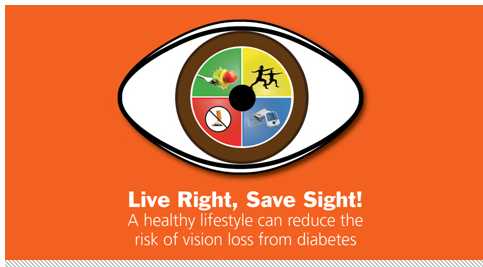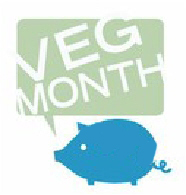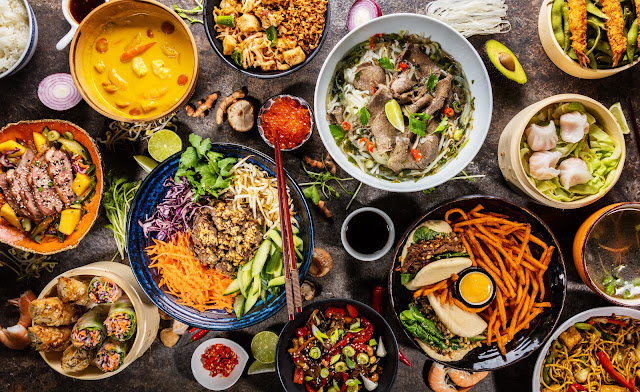November Highlights
Saturday, July 26, 2025
November Wellness News
November Highlights
Friday, July 25, 2025
Culinarians Day
A Tribute to the Culinary Arts Profession
A Tribute to the Culinary Arts Profession
Culinary education is available from a wide number of institutions offering diploma, associate, and bachelor degree programs in culinary arts. Depending on the level of education, this can take one to four years. An internship is often part of the curriculum. Most professional kitchens follow the apprenticeship system.
These are some of the most well-known culinary schools in the food-service industry and culinary arts.
More chefs are teaming up with dietitians to meet the community's needs. Even Elmo and White House Assistant Chef Sam Kass talk about the importance of healthy and delicious school meals.
The videos below give you a history of the profession during the 20th and 21st centuries. As we move towards the present, you will notice how health and nutrition play an important role in the development of new cuisines and the modification of traditional favorites.
Culinary Team USA 2012
Seven chefs unite to take on the challenge of their careers. They will compete in a global event to test their skills like never before. They are ACF Culinary Team USA.
Elmo joins White House Assistant Chef Sam Kass in the White House kitchen to talk about the importance of healthy and delicious school meals following President Obama's signing of the Healthy, Hunger-Free Kids Act. This legislation is an important step forward toward ensuring that no child goes to school hungry and that all children have access to healthy, nutritious foods at school.
Research Chefs Association (RCA)
"It is the blending of culinary arts and food science, promoted by the Research Chefs Association. This fast-growing discipline is gaining popularity in the industry and popping up in degree programs at the college level because the food product development industry is demanding that their professionals have a combination of
culinary and food science skills."
Thursday, July 24, 2025
Mango Strawberry Slushy
½ cup fresh mango
Serving Size: 1 cup
Wednesday, July 23, 2025
FDA to Revoke 52 Standards of Identity for Food Products
The FDA announced that it is revoking or proposing to revoke 52 outdated Food Standards of Identity (SOIs) for products such as canned fruits and vegetables, dairy, baked goods, and macaroni. These rules, initially created to ensure uniformity and prevent food fraud, are now considered obsolete due to advances in food science, labeling, and safety regulations. The move aligns with broader efforts under the Trump Administration to reduce regulatory burdens, increase transparency, and support innovation in food production, while still protecting consumers.
The Potential Downside
While revoking outdated Standards of Identity (SOIs) can encourage innovation and reduce red tape, there are potential downsides worth noting:
✅ Loss of uniform definitions:
Without clear standards, products could vary more widely in ingredients or quality, making it harder for consumers to know exactly what they’re buying.
✅ Risk of consumer confusion or deception:
SOIs historically ensured “honesty and fair dealing.” Removing them might open the door for misleading product names or formulations that don’t match consumer expectations.
✅ Weaker safeguards for traditional products:
Standards helped preserve certain traditional recipes and prevent cost‑cutting substitutions that could lower nutritional value or quality.
✅ Regulatory gaps:
Although modern labeling and safety laws exist, some worry that fewer defined standards could require stronger enforcement elsewhere to prevent food fraud.
Bottom line:
Revoking obsolete rules can be positive, but agencies and manufacturers must ensure transparency and accurate labeling so consumers remain protected and informed.
Monday, July 21, 2025
Combination Foods
Nutrition Facts
These foods can be substituted in your meal plan, even though they contain added sugar or fat. However, they do not contain as many vitamins and minerals as the servings on the Starch, Fruit, or Milk list.
When planning to include these foods in your meal, be sure to include foods from all the lists to eat a balanced meal.
Selection Tips
Because many of these foods are concentrated sources of carbohydrate and fat, the portion sizes are often very small.
Always check Nutrition Facts on the food label. It will be your most accurate source of information.
Many fat-free or reduced products made with fat replacers contain carbohydrate. When eaten in large amounts, they may need to be counted. Consult with your instructor to determine the correct method for counting.
Look for fat-free salad dressings in smaller amounts on the Free Foods list.
Fat Group
| |||
Nutrition Facts
| |||
Selection Tips
|
Fruit Group
This list includes fresh, frozen, canned, and dried fruits, as well as fruit juices. In general, one fruit serving is equal: . 1 small to medium fresh fruit. . ½ cup of canned or fresh fruit or fruit juice. . ¼ cup of dried fruit. (The weight includes skin, core, seeds, and rind). | |||
Nutrition Facts.
| |||
Selection Tips.
|
Vegetable Group
| ||||||||||||||||
Sunday, July 20, 2025
July, National Ice Cream Month
Join Our Ice Cream Social
Join Our Ice Cream Social
The third Sunday in July is National Ice Cream Day. Enjoy
Berries, Light Vanilla Ice Cream,
Blueberries with
1 g Dietary Fiber; 9 g Fat; 46 mg Cholesterol; 26 mg Sodium
Raspberries with
1 g Dietary Fiber; 9 g Fat; 49 mg Cholesterol; 59 mg Sodium
"How to choose healthier ice cream"
From the table below you can see ice cream has a variety of calories and amounts of fat. I have never been a fan of no sugar-added ice cream. However, the flavor of some of the light brands I found to match those of the regular and premium brands. Try some of the light brands and see what you think?
Saturday, July 19, 2025
National Daiquiri Day - Frozen Watermelon Strawberry Daiquiri
Yields: 4 servings
Serving Size: 8 ounces
Ingredients.
3 cups frozen watermelon chunks
1 cup sliced fresh strawberries
1/2 cup rum (can be omitted or reduced to taste)
Juice of 1 lime
3 tablespoons agave syrup
Ice if needed
Watermelon wedges for decoration
Directions.
1. Combine all ingredients in a blender, process until smooth. If you like your cocktails thick and slushy, add ice to get the right consistency. If you prefer your cocktail less slushy, skip the ice.
2. Garnish with watermelon wedges and enjoy!
Nutrition Profile:
Yields: 4 servings (with Rum)
Serving Size: 8 ounces
Calories (kcal) 162
Protein (g) 1
Carbohydrates (g) 24
Total Dietary Fiber (g) 1
Total Sugars (g) 20
Added Sugar (g) 11
Fat (g) 0
Saturated Fat (g) 0
Cholesterol (mg) 0
Potassium (mg) 196
Sodium (mg) 2
Nutrition Profile:
Yields: 4 servings (without Rum)
Serving Size: 8 ounces
Calories (kcal) 96
Protein (g) 1
Carbohydrates (g) 24
Total Dietary Fiber (g) 1
Total Sugars (g) 20
Added Sugar (g) 11
Fat (g) 0
Saturated Fat (g) 0
Cholesterol (mg) 0
Potassium (mg) 196
Sodium (mg) 2
Ensure accurate nutritional analysis for your recipes utilizing an extensive research database and over 30 years experience. A valuable service for the Recipe Blogger, Media, Cookbook Publishers, Writers, Chefs, and Recipe Websites. Your readers will benefit from the Nutrition information and a Registered Dietitian Nutritionist. Contact: Dietitians-Online.com; Sandra Frank, Ed.D, RDN, LN, FAND at recipenews@gmail.com
Friday, July 18, 2025
Sugar Showdown: Cane Sugar vs. HFCS and What It Means for Your Health
What’s the Difference Between Cane Sugar and
High Fructose Corn Syrup (HFCS)?
Cane sugar (table sugar or sucrose) is extracted from sugarcane or sugar beets. Chemically, it’s made of 50% glucose and 50% fructose bonded together. Your body breaks it down into those simple sugars during digestion.
High-fructose corn syrup (HFCS) is derived from cornstarch. Enzymes convert some of the glucose in corn syrup into fructose, resulting in blends such as HFCS-55 (approximately 55% fructose, 45% glucose, commonly used in soft drinks) and HFCS-42 (used in some baked goods and condiments).
Is Cane Sugar Better Than High Fructose Corn Syrup?
Nutritionally, they are very similar:
-
Both provide roughly the same calories (about 4 per gram).
-
Both are forms of added sugar that, in excess, can contribute to weight gain, insulin resistance, fatty liver disease, and increased risk of heart disease.
Some people assume cane sugar is “healthier” because it sounds more natural, but your body metabolizes them almost the same way. The real issue is how much added sugar you consume overall, not the specific type.
Bottom line:
✅ Enjoy both sparingly.
✅ Focus on limiting added sugars of all kinds.
✅ Choose whole fruits and naturally sweet foods for a healthier diet.
Tips for Reducing Added Sugars in Your Diet
Even though cane sugar and HFCS are metabolized similarly, being mindful of your overall intake can make a big difference for your health. Here’s how:
✅ Read labels carefully.
Look for “Added Sugars” on Nutrition Facts. Ingredients such as cane sugar, corn syrup, honey, agave, or molasses all contribute to added sugar.
✅ Limit sweetened drinks.
Sodas, fruit punches, and energy drinks are major sources of HFCS and cane sugar. Try sparkling water with a splash of citrus instead.
✅ Choose unsweetened versions.
Opt for plain yogurt, nut butters, and cereals without added sweeteners—then add fresh fruit or a drizzle of honey if needed.
✅ Cook and bake at home.
When you control the recipe, you can cut the sugar in half, use fruit purées (like mashed bananas or applesauce), or experiment with spices like cinnamon or vanilla to add flavor without sweetness.
✅ Watch “natural” claims.
Even products labeled “made with cane sugar” or “no HFCS” can still contain high levels of added sugar. Natural doesn’t always mean healthy.
Bottom line: Whether it’s cane sugar or HFCS, moderation is key. By checking labels, choosing whole foods, and being mindful of added sugars, you can enjoy a sweeter life without overdoing it.
Resources
Thursday, July 17, 2025
Pollination of a Watermelon Flower
Pollination of a
Female Watermelon Flower
This process occurs naturally with the help of bees and other pollinators, which carry pollen as they move between blossoms. In some gardens or greenhouses, growers hand‑pollinate by using a small brush or by gently transferring pollen from a freshly opened male flower to the center of the female flower.
Without pollination, the fruit won’t grow, showing just how vital pollinators are for a healthy harvest.
Dietitian Blog List
-
My Southern Mom Taught Me Her Secret to the Best Cornbread (It's So Moist!) - It's a family favorite. *READ MORE...*1 hour ago
-
The 3 Best Vanilla Extracts: A Taste Test - In a taste test of Nielsen-Massey, Heilala, McCormick, and more, which vanilla reigned supreme?17 hours ago
-
Free 7 Day Healthy Meal Plan (Oct. 13-19) - A free 7-day, flexible weight loss meal plan including breakfast, lunch and dinner ideas and a shopping list. All recipes include macros and Weight Watcher...22 hours ago
-
Tips for Visiting Kenya - We had the privilege of visiting Kenya this summer to do a safari. We went with my Dad and also met my brother and sister in law and their kids there. ...3 days ago
-
Association between dietary copper intake and cognitive function in American older adults: NHANES 2011–2014 - Nature - Association between dietary copper intake and cognitive function in American older adults: NHANES 2011–2014 Nature3 months ago
-
8 Healthy Foods Safe to Go Down the Garbage Disposal - A garbage disposal is a convenience, but it cannot help you if you place the wrong things inside. When you do this, it can create clogs, lead to smelly odo...8 months ago
-


















































